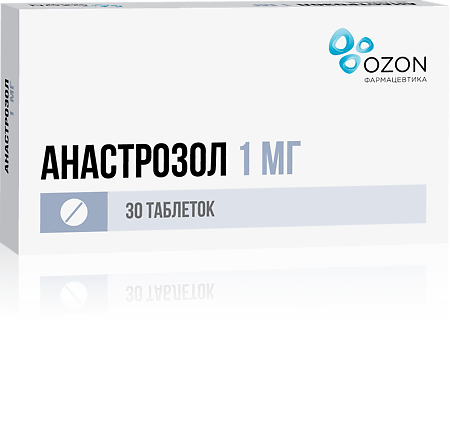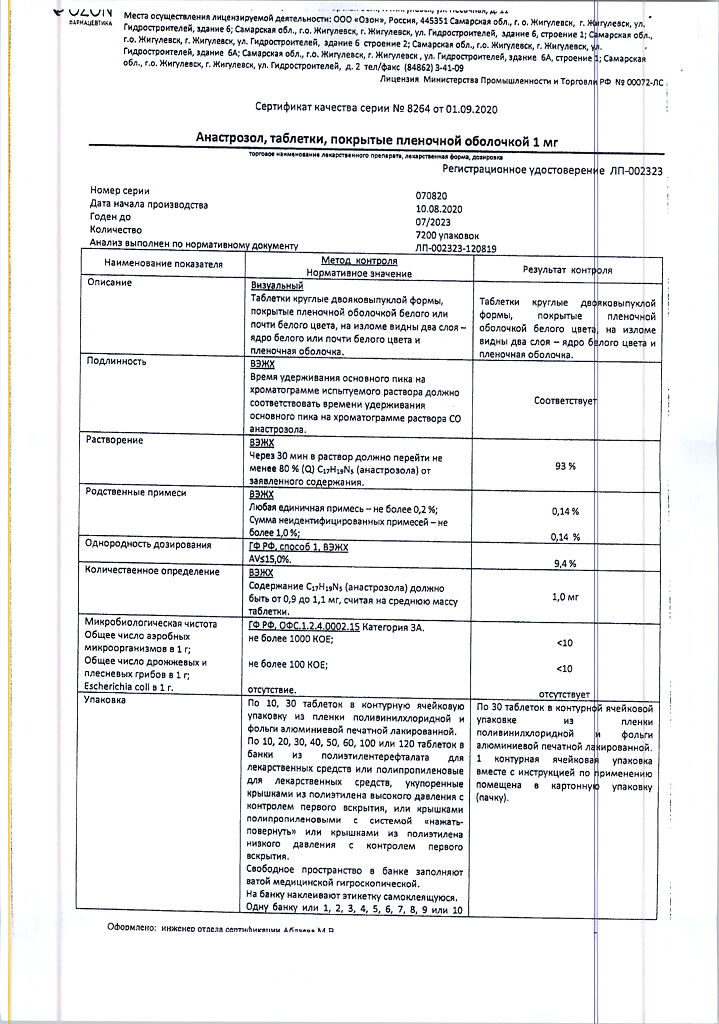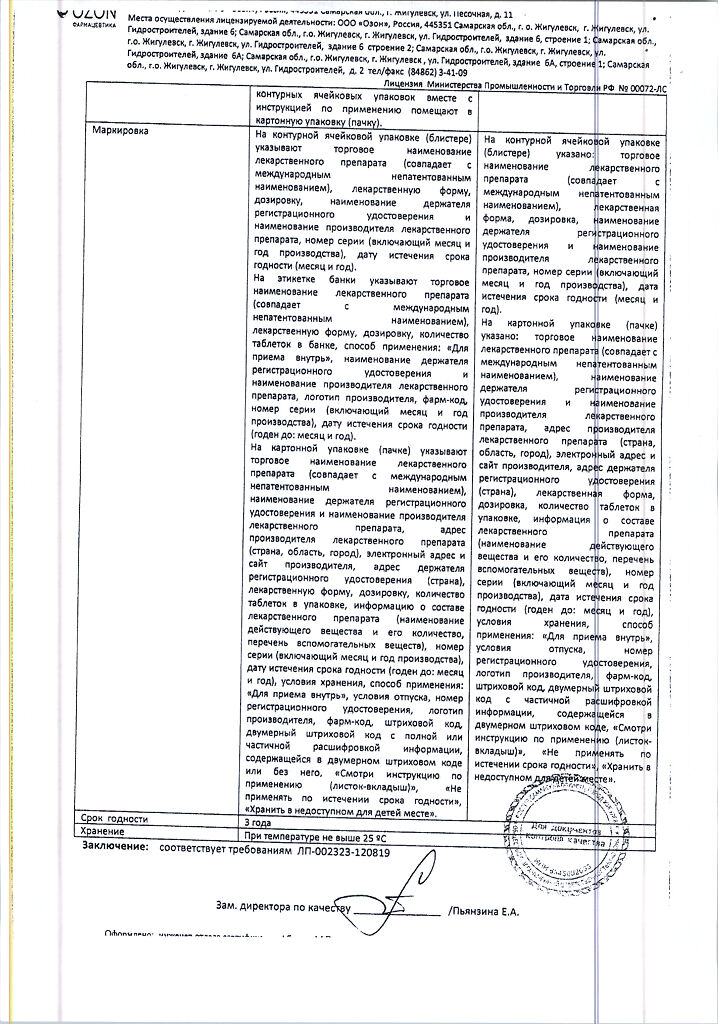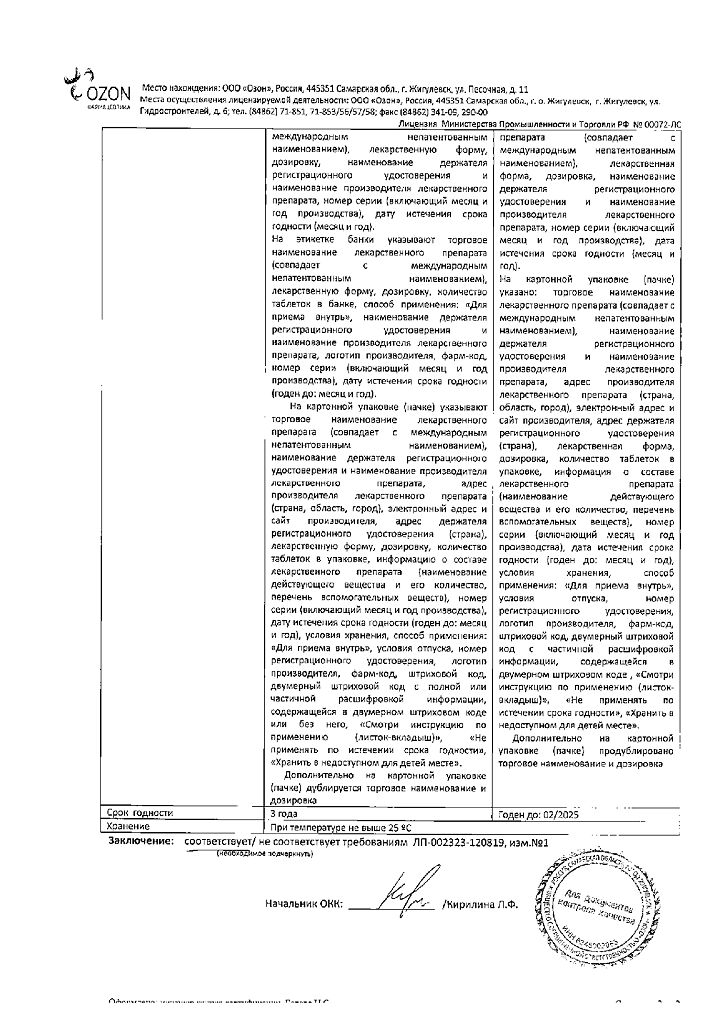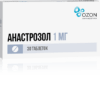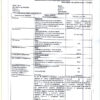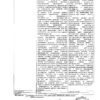No products in the cart.
Description
Pharmacodynamics
Antitumor drug. A highly selective non-steroidal inhibitor of aromatase, the enzyme by which, in postmenopausal women, androstenedione is converted in peripheral tissues to estrone and then to estradiol. Anastrozole has no gestagenic, androgenic or estrogenic activity.
In postmenopausal women, anastrozole at a daily dose of 1 mg causes an 80% reduction in estradiol. Anastrozole in daily doses up to 10 mg has no effect on cortisol and aldosterone secretion.
Pharmacokinetics
Intake and distribution
Anastrozole is rapidly absorbed from the gastrointestinal tract after oral administration on an empty stomach. Cmax in plasma is reached within 2 hours. Food slightly reduces absorption rate (but not its degree) and does not lead to clinically significant effect on Css of the drug in plasma in a single daily dose of anastrozole. After 7 days of administration, the plasma Css of anastrozole is approximately 90-95%. Binding to plasma proteins is 40%.
Metabolism and excretion
The metabolism of anastrozole is by N -dealkylation, hydroxylation and glucuronidation. Triazole, the main metabolite determined in plasma, does not inhibit aromatase.
The T1/2 from plasma is 40-50 h. Less than 10% of the dose is excreted unchanged in the urine within 72 hours after drug administration. Metabolites are excreted mainly in the urine.
Pharmacokinetics in special clinical cases
The clearance of anastrozole after oral administration in cirrhosis or renal dysfunction is not changed.
Indications
Indications
Common breast cancer in postmenopausal women.
Pharmacological effect
Pharmacological effect
Pharmacodynamics
Antitumor drug. A highly selective non-steroidal inhibitor of aromatase, an enzyme that converts androstenedione in peripheral tissues into estrone and then into estradiol in postmenopausal women. Anastrozole does not have progestational, androgenic and estrogenic activity.
In postmenopausal women, anastrozole at a daily dose of 1 mg causes a decrease in estradiol levels by 80%. Anastrozole in daily doses of up to 10 mg has no effect on the secretion of cortisol and aldosterone.
Pharmacokinetics
Suction and distribution
After oral administration on an empty stomach, Anastrozole is rapidly absorbed from the gastrointestinal tract. Cmax in plasma is achieved within 2 hours. Food slightly reduces the rate of absorption (but not its extent) and does not lead to a clinically significant effect on Css of the drug in plasma with a single daily dose of anastrozole. After 7 days of taking the drug, Css of anastrozole in plasma is approximately 90-95%. Binding to blood plasma proteins – 40%.
Metabolism and excretion
Anastrozole is metabolized by N-dealkylation, hydroxylation and glucuronidation. Triazole, the main metabolite detected in plasma, does not inhibit aromatase.
T1/2 from plasma is 40-50 hours. Less than 10% of the dose is excreted unchanged in the urine within 72 hours after taking the drug. Metabolites are excreted primarily in the urine.
Pharmacokinetics in special clinical situations
The clearance of anastrozole after oral administration in patients with liver cirrhosis or impaired renal function does not change.
Special instructions
Special instructions
In women with estrogen receptor-negative tumors, the effectiveness of anastrozole has not been demonstrated unless there has been a previous positive clinical response to tamoxifen.
If there is doubt about the patient’s hormonal status, menopause should be confirmed by determining sex hormones in the blood serum.
There is no data on the use of anastrozole in patients with severe liver dysfunction or in patients with severe renal impairment (creatinine clearance < 20 ml/min).
In case of persistent uterine bleeding while taking anastrozole, consultation and observation of a gynecologist is necessary.
Preparations containing estrogens should not be used simultaneously with anastrozole, as they will neutralize the pharmacological effect of the latter.
By reducing circulating levels of estradiol, anastrozole may cause a decrease in bone mineral density.
In patients with osteoporosis (or at risk of developing osteoporosis), bone mineral density should be assessed by densiometry (for example, DEXA scan) at the beginning of treatment and over time. If necessary, treatment or prevention of osteoporosis should be started under close medical supervision.
There is no data on the simultaneous use of anastrozole and LHRH analogue drugs.
It is unknown whether anastrozole improves treatment outcomes when used in conjunction with chemotherapy.
Use in pediatrics
The use of the drug in pediatric patients is contraindicated.
Impact on the ability to drive vehicles and other mechanisms that require increased concentration
Some side effects of anastrozole, such as asthenia and drowsiness, may adversely affect the ability to perform potentially hazardous activities that require increased concentration and speed of psychomotor reactions. In this regard, it is recommended to exercise caution when operating vehicles and machinery when these symptoms appear.
Active ingredient
Active ingredient
Anastrozole
Composition
Composition
Active ingredients:
anastrozole 1 mg.
Excipients:
lactose monohydrate 72 mg,
microcrystalline cellulose 15.6 mg,
povidone 3 mg,
magnesium stearate 0.9 mg,
colloidal silicon dioxide 0.5 mg,
sodium carboxymethyl starch 2 mg.
Film shell composition:
hypromellose 1.65 mg,
macrogol-4000 0.45 mg,
titanium dioxide 0.9 mg.
Contraindications
Contraindications
Severe renal failure (creatinine clearance <20 ml/min); moderate or severe liver failure (the safety and effectiveness of the drug have not been established); concomitant therapy with tamoxifen; premenopause; pregnancy; breastfeeding period; childhood; hypersensitivity to anastrozole or other components of the drug.
Side Effects
Side Effects
Determination of the frequency of adverse reactions:
very often (> 10%);
often (1-10%);
rarely (0.1-1%);
very rare (<0.1%).
From the reproductive system: often – vaginal dryness; rarely – vaginal bleeding (mainly during the first weeks after discontinuation or change of previous hormonal therapy to anastrozole).
From the digestive system: often – nausea, diarrhea; rarely – anorexia, vomiting, increased activity of GGT and alkaline phosphatase.
From the cardiovascular system: very often – hot flashes.
From the side of the central nervous system: often – headache; rarely – drowsiness.
From the musculoskeletal system: often – arthralgia.
Dermatological reactions: often – thinning hair, skin rash; very rarely – polymorphic erythema (Stevens-Johnson syndrome).
Metabolism: rarely – hypercholesterolemia; possibly – a decrease in bone mineral density due to a decrease in the level of circulating estradiol (risk of osteoporosis, bone fractures).
Other: often – asthenia; very rarely – allergic reactions (including angioedema, urticaria, anaphylactic shock).
Interaction
Interaction
Drug interaction studies with antipyrine and cimetidine indicate that clinically significant drug interactions mediated by cytochrome P450 isoenzymes are unlikely when anastrozole is co-administered with other drugs.
There are no clinically significant drug interactions when using anastrozole concomitantly with other commonly prescribed drugs.
At the moment, there is no information on the use of anastrozole in combination with other anticancer drugs.
Preparations containing estrogens reduce the pharmacological effect of anastrozole, and therefore they should not be prescribed simultaneously with anastrozole.
Tamoxifen should not be prescribed concomitantly with anastrozole, as it may weaken the pharmacological effect of the latter.
Overdose
Overdose
Symptoms: A single dose of anastrozole that could lead to life-threatening symptoms has not been determined.
Treatment: in case of overdose, treatment should be symptomatic.
If the patient is conscious, it is advisable to induce vomiting.
General supportive therapy, monitoring the patient and monitoring the function of vital organs and systems are recommended. Dialysis may be performed. There is no specific antidote.
Storage conditions
Storage conditions
Store out of reach of children, in a dry place at a temperature not exceeding 25°C.
Shelf life
Shelf life
2 years.
Manufacturer
Manufacturer
Ozon, Russia
Additional information
| Shelf life | 2 years. |
|---|---|
| Conditions of storage | Store out of reach of children, dry place at a temperature not exceeding 25 ° C. |
| Manufacturer | Ozon, Russia |
| Medication form | pills |
| Brand | Ozon |
Related products
Buy Anastrozole, 1 mg 30 pcs with delivery to USA, UK, Europe and over 120 other countries.

